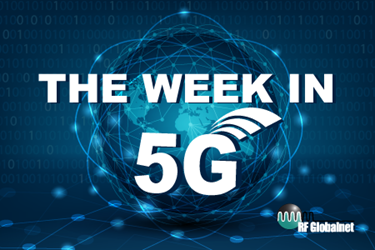The Week in 5G: 1/7/2020 — 5G Big at CES, U.S. FCC Asked to Referee Wireless Industry Vs. Utilities in Small Cell Skirmish
By Ed Biller

At CES 2020 in Las Vegas this week, 5G hype is everywhere, but 5G technology is a bit tougher to locate, reports CNET. OnePlus teased a new concept phone announcement and Samsung, Huawei, LG, and Lenovo all are expected to be at the trade show, states the report, but both LG and Huawei — as well as a number of carriers — have said they won’t make any 5G-related announcements at CES.
CNET reports that next month’s Mobile World Congress is the more likely venue for phone announcements, while CES 5G concepts are more likely to focus on automotive, manufacturing, and industrial applications.
Among those announcements, so far, is Verizon and HERE Technologies’ pact to “explore cutting-edge applications of Verizon’s 5G Ultra-Wideband network and multi-access edge compute (MEC) platform, 5G Edge, coupled with HERE location, data technology and autonomous vehicle expertise,” announced Monday in the lead-up to CES. The partnership’s initial stages will focus on “vehicle and pedestrian safety such as collision avoidance, and better location identification and navigation for ridesharing pick-up/drop-off and delivery services,” states the announcement.
Inseego announced it will preview its new 5G portfolio of “industrial IoT, fixed wireless access and mobile broadband product lines in private briefings at CES,” as well.
Also at CES, Lenovo unveiled what it claims is the first 5G laptop to feature Qualcomm’s Snapdragon 8cx processor: the Yoga 5G. The device is set to go on sale this spring with a $1500 price tag, according to a report by The Verge.
SureCall, meanwhile, used CES to announce the availability of what it’s billing as the world's first 5G signal booster, the Force8. “The Force8 will boost 5G connectivity for specific bands in commercial buildings throughout urban, suburban, and rural areas across North America,” states a release by the company.
In handset news, don’t expect Apple to introduce a 5G-capable iPhone until at least September, or an upgraded, mmWave version of that base model before 2021, reports CNBC, citing analysis by Susquehanna International (SIG).
In 5G infrastructure news, in the United States, unfounded health concerns appear to have temporarily taken a back seat to the battle between an unstoppable force — a wireless industry intent on speedy small cell rollouts — and immovable objects — local governments and a utility industry demanding exorbitant “siting” fees for small cell units on light or other utility poles.
“…the wireless industry's main trade group said that an unnamed Hawaiian electric utility levied a 100x surcharge for small cells installed on street light poles instead of electricity distribution poles,” reports Light Reading. Other utilities claim their poles cannot support the weight of the small cell units vital to 5G, which comprise a piece of equipment about the size of a pizza box. Indeed, the adversaries cannot even agree on a proper definition for “pole.”
Still, AT&T claims that its mmWave 5G service now covers parts of 35 U.S. cities, and its low-band 5G sprawls across 19 metro areas with its slow low-band 5G. Meanwhile, in the UK, telco O2 says it is “providing 5G service in 20 cities across the country as of the end of 2019.”
Finally, in South Korea, telco KT has inked a deal with cloud gaming specialist Ubitus to bring its gaming service — called 5G Streaming Game — exclusively to its 5G customers in South Korea,” reports RCR Wireless. A March 2020 launch is expected for the service, which “will be available on multiple mobile devices… and will initially offer about 100 titles, with more to be added each month.”
